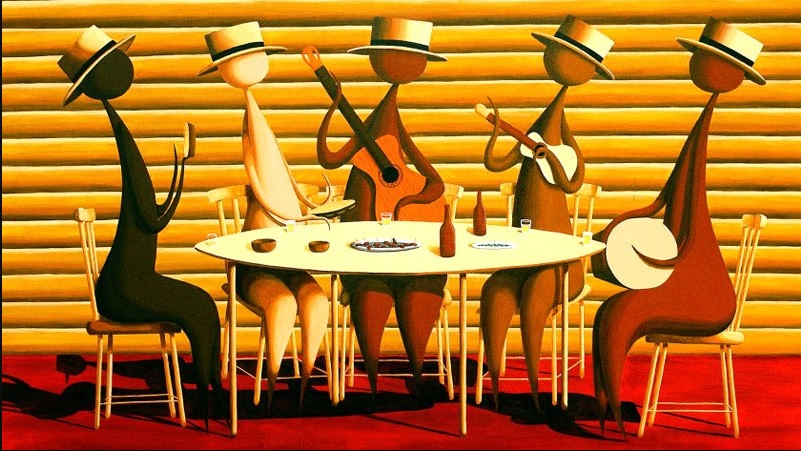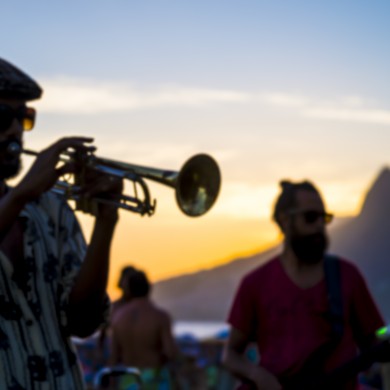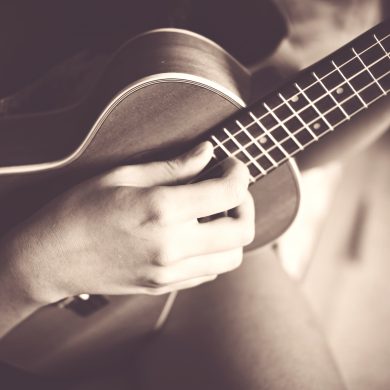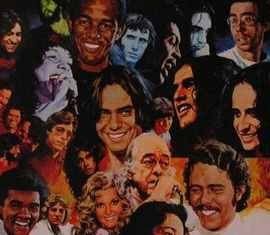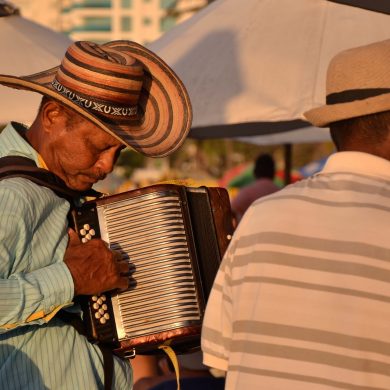Cultural music of an excellent standard, samba can be considered as the manifestion of pure Brazilian music.
Universally known throughout the world, it is the perfect expression of the exuberance of a mixed race between European and African roots, particularly Africa where samba draws its deepest roots. A real institution, it is very much alive in Brazil.

The soul music of Brazil
It is claimed that samba landed in Brazil with slaves taken from Africa. Its frenzied rhythm is indeed derived from the tribal dances that these uprooted people practiced in Brazil, when they tried to keep their traditions alive.
It is essentially based on percussion, even though harmony instruments accompany it. According to folklore, the very word “samba” would come from the expressions of “gaiety” or “excitement”. This is the perfect name for this music, and the dance that goes with it which is fast and syncopated.
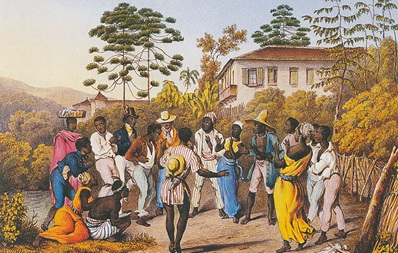
Samba, Brazilian music from Rio
Historically, samba was born in the early twentieth century on the docks of the port and the streets of the poor neighborhoods of Rio de Janeiro. The descendants of the slaves were obviously numerous, working the most difficult jobs and living in the favelas. Originally only based on percussion (rudimentary instruments that one could manufacture), it was gradually enriched by the guitar and the cavaquinho (small four-stringed guitar coming from Portugal), to profit in more recent years from brass, and finally synthetic instruments.
Music originally associated with a dance deemed violent and obscene by upper Brazilian society because of its sexual connotation, the samba became popular throughout the country and acquired its position little by little: it became the official carnival music in the thirties. In the beginning, people paraded to the rhythm without costumes, but in groups called Blocos. In Rio, samba schools would soon be born, all of which will have their own particular uniform, then, with the advent of modern themes and an institutionalized carnival, they would compete to have more colorful costumes than the others.
The time of recognition
The music itself acquired its first letters of nobility with an official recording dating from 1916, Pelo telefone. This gently rhythmic song, written by Mauro de Almeida and Ernesto Joaquim Maria dos Santos – aka Donga, who sings it on this recording, would become a standard, often picked up, most of the time much more furiously.
Composers such as Heitor dos Prazeres, Ismael Silva and Alfredo da Rocha Viana, known as “Pixinguinha” popularized this new rhythm in the 1920s and 1930s. Pixinguinha raised samba through the ranks of music thanks to his excellent knowledge of classical music as well as jazz. Ismael Silva created the first samba school in Río de Janeiro, a school that would transform the genre to adapt to carnival parades.
Radio quickly understood the importance of this new and exciting music, and broadcast it widely on the air, making it popular throughout the country. Also in the thirties, the Brazilian populist dictator Getulio Vargas during his Estado Novoto, proclaimed it “the official music of Brazil”. A clever political maneuver to rally the voices of the disinherited, some say, but the fact was established once and for all.
The immortal samba
It was in this pre-war period that the aura of samba went beyond the borders of Brazil, thanks to new means of communication including cinema. Brazilian actress Carmen Miranda would be the champion of this particular music thanks to her records sold in millions all over the world and her Hollywood films (she was nicknamed the “Brazilian bomb”). The most famous, Copacabana in 1939, had staging interpreted from the famous Tico, tico no Fubà (upon which moviegoers would recognize the stealthy plan of a facetious Groucho Marx “invited” and subjugated by the incendiary brunette).

A timeless icon of Brazilian music
In the sixties, the flame of samba flickered against the new wind of her “daughter” Bossa Nova, which was more prized by intellectual circles and courted by jazzmen. In the seventies, samba came back on the radio with singers like Martinho da Vila, Clara Nunes and Beth Carvalho. Even though the American disco later diverted young people from music deemed out of date, it remained the standard of festivals and carnivals. Samba can be danced in couples, but also solo, a great advantage that allows for all the eccentricities, whether on the stands of sambodromes, football stadiums or motor racing.
Decorated or diluted by successive innovative musical movements, but never extinguished, samba still appears as the ultimate representation of Brazilian music. She can be considered moreover as the mother of much of the popular music of Brazil, bossa nova, batucada, samba-reggae or samba-rock.
All the great popular singers, from Gilberto Gil to Daniela Mercury via Milton Nascimento, Jorge Ben, Chico Buarque, Toquinho or Caetano Veloso have built their style with samba. Thanks to its strong second-beat, syncopated binary rhythm and simple melodies, it is the most accessible form of expression for a warm-blooded people who are quick to party at the slightest opportunity. In this, she remains immortal. Some would say: Samba is the soul of Brazil.
